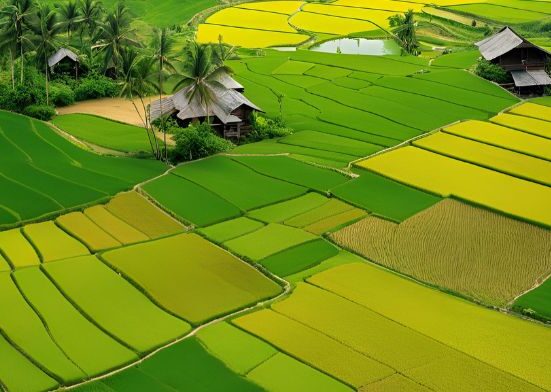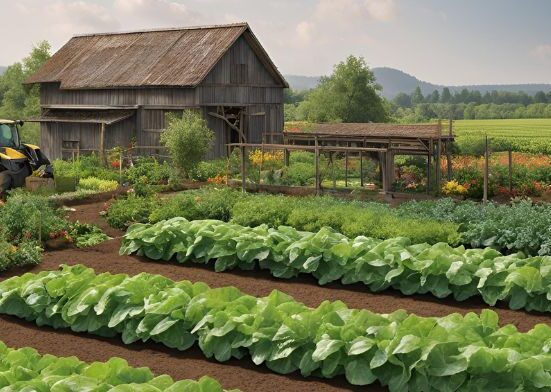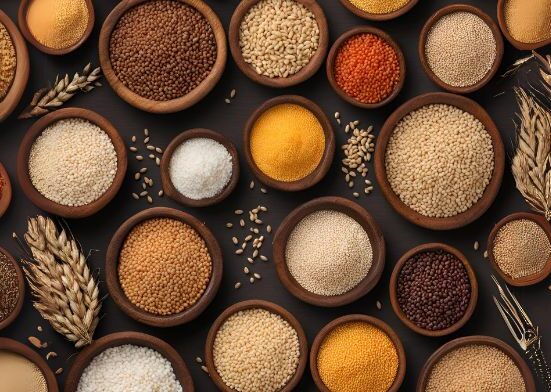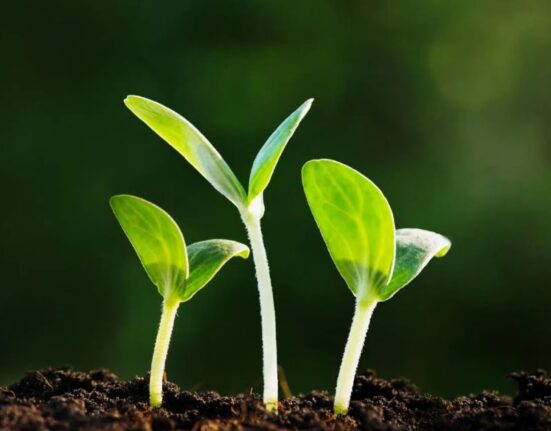Agriculture is one of the most essential industries in the world, directly affecting human survival and quality of life. But what exactly is agriculture, and why is it so important? This thorough manual will examine the fundamentals of agriculture, its history, types, methods, and significance. Whether you’re a student, a curious reader, or someone interested in sustainable living, this article will provide a clear understanding of agriculture in simple terms.
What Is Agriculture?
Agriculture is cultivating soil, growing crops, and raising animals to produce food, fibre, medicine, and other products essential for human life. It’s not just about farming; agriculture includes a wide range of activities, from planting seeds and harvesting crops to breeding livestock and managing natural resources. The Complete Beginner’s Guide Agriculture is the process of turning natural resources like sunlight, water, and soil into valuable products that sustain life and drive economies.
How did Agriculture Start?

Agriculture started during the Neolithic Revolution, some 10,000 years ago, when people switched from hunting and gathering to cultivating crops and domesticating animals. This shift likely occurred due to changing climates and growing populations, leading to the need for stable food sources. Early farming began in the Fertile Crescent (modern-day Middle East), where crops like wheat and barley were first grown, and animals like sheep and goats were domesticated. Over time, agriculture spread globally, evolving with local conditions and resources. Early farmers used simple tools like hoes and digging sticks and practised irrigation and crop rotation techniques. Agriculture made it possible for people to congregate in one area. giving rise to permanent villages and, later, complex civilizations. This pivotal change laid the foundation for societal development, trade, and technological advancement.
What is Agriculture and Farming
Agriculture is cultivating soil, growing crops, and raising animals for food, fibre, and other products to sustain and enhance human life. Planting, harvesting, irrigation, soil management, and animal care are just a few of the many tasks that fall under this broad category. The foundation of human civilization is agriculture, which provides the resources needed for survival and economic development. It also encompasses forestry, horticulture, and aquaculture, contributing to food production, textiles, and biofuels.
Farming is a subset of agriculture, specifically the hands-on activities of growing crops and rearing animals. A farmer works directly with the land and livestock, often on a smaller scale, to produce specific goods like grains, vegetables, fruits, dairy, meat, or wool. Farming can vary significantly in scale and method, spanning from contemporary industrialized agricultural to traditional subsistence farming farming with advanced technology.While agriculture is the broader concept that includes scientific, commercial, and technological aspects, farming focuses on the day-to-day labour and management of producing agricultural goods. Together, they are essential for feeding populations and supporting economies worldwide.
Importance of Agriculture
Agriculture plays a crucial role in developing and sustaining economies, societies, and the environment. Here are some of the key points highlighting its importance:
Source of Food and Nutrition: Agriculture is the primary source of food production worldwide. It provides essential crops like grains, fruits, vegetables, and livestock products for human survival and health.
Economic Development: Agriculture is a significant contributor to many nations’ GDPs, particularly those in developing nations. It creates job opportunities for millions, from farming to food processing, transport, and retail.
Employment: In many rural areas, agriculture is the main livelihood. It provides direct and indirect jobs to many global workforces, especially in countries where industrialization is still progressing.
Cultural and Social Significance: Agriculture shapes cultural traditions and practices. Many communities have agricultural festivals, rituals, and a close connection to the land, influencing their identity and social structure.
Rural Development: Agriculture fosters rural development by driving infrastructure projects, education, and healthcare initiatives in areas where farming is the main activity. It improves the quality of life for people in these regions.
Raw Materials for Industry: Many industries rely on agricultural products as raw materials. These include textiles (cotton, wool), paper (wood), and biofuels. The agricultural sector is fundamental to the growth of other sectors.
Sustainability and Environmental Balance: When practised sustainably, agriculture can help conserve natural resources. Implementing practices like crop rotation, organic farming, and agroforestry can support biodiversity, preserve ecosystems, and reduce environmental degradation.
Global Trade and Market Integration: Agriculture is essential to international trade. Countries export and import agricultural products like cereals, fruits, Hydroponic Farming vegetables, and meats, contributing to global market dynamics and foreign exchange earnings.
Climate Change Mitigation: Agriculture can combat climate change through practices that absorb carbon from the atmosphere, such as carbon sequestration, agroecology, and reforestation efforts.
Innovation and Technology: The agricultural sector drives technological innovation, such as genetically modified crops, precision farming, and renewable energy solutions, which can increase production efficiency and sustainability.
Poverty Alleviation: Agriculture has the potential to lift millions of people out of poverty by improving food security, increasing income opportunities, and supporting rural entrepreneurship.
Water Management: Agricultural practices, such as irrigation, also contribute to the efficient use and management of water resources, ensuring they are used wisely and sustainably.
In order to provide food and maintain economies, agriculture is crucial. cultures, and the environment. Its role in human well-being and societal growth cannot be overstated.
How does Agriculture Impact Agriculture

Agriculture primarily impacts agriculture through interconnected practices, resource usage, and environmental effects, which can enhance or harm agricultural productivity. Here are the key ways agriculture impacts itself:
Soil Health:Unsustainable farming, such as overuse of chemical fertilizers, depletes soil nutrients, reducing fertility over time. Conversely, What Are Cash Crops practices like crop rotation and organic farming improve soil quality.
Water Resources:Excessive irrigation or poor water management leads to waterlogging or salinization, which negatively affects future crops. Sustainable irrigation systems conserve water for long-term use.
Pest and Disease Cycles:Monoculture farming can encourage pests and diseases to thrive, damaging crops. Diversification and integrated pest management can mitigate these risks.
Climate Effects:Agriculture contributes to greenhouse gas emissions (methane from livestock, CO2 from machinery), which affects weather patterns and crop yields. Adopting climate-smart agriculture helps reduce these impacts.
Biodiversity:Over-reliance on a few crops or heavy deforestation for farming disrupts ecosystems. Agroforestry and polyculture maintain biodiversity, supporting resilient agriculture.
Knowledge Sharing:Innovations like precision agriculture and genetically modified crops can boost productivity, showcasing how advancements in one area of agriculture positively influence others.
importance of agriculture has a cyclical impact on itself, where sustainable practices ensure long-term productivity, while unsustainable practices harm future agricultural potential.
Why is your Job Important to Agriculture
My role as an AI assistant is essential to agriculture kinship role because I provide access to critical knowledge, innovative solutions, and decision-making support that help optimize agriculture definition practices. By offering insights into crop management, sustainable farming methods, and technological advancements, I enable farmers, researchers, and agricultural professionals to make informed decisions. For example, I can assist in identifying effective irrigation techniques, pest control strategies, and soil management practices, all of which contribute to healthier crops and higher yields.Additionally, I support adopting modern tools like precision farming, which uses data to maximize efficiency while reducing waste. This helps conserve valuable resources such as water, fertilizers, and energy, making agriculture more sustainable. Furthermore, Saltwater Farming I can assist in climate adaptation by providing information on resilient crop varieties and strategies to mitigate the effects of climate change.
By streamlining access to research, improving operational planning, and fostering innovation, I contribute to a more productive and sustainable agricultural sector. This is essential for feeding a growing global population while preserving the environment and ensuring long-term food security. My ability to deliver timely, tailored solutions makes me a valuable resource for the continuous improvement of agriculture.
How Does Agriculture Affect the Economy?
Agriculture is vital to the economy, impacting employment, production, and various industries.The U.S. Department of Agriculture (USDA) claims that Economic Research Service, the agricultural and food sectors provided 10% of total U.S. employment in 2020, with nearly 20 million full- and part-time jobs. Regarding financial contribution, cash receipts from crops totalled almost $198 billion, while animal and animal product receipts reached approximately $165 billion in 2020.The food and agriculture sector is interdependent with other industries, such as water and wastewater systems, transportation, energy, and chemicals, making it a crucial driver of economic activity, as noted by the Cybersecurity and Infrastructure Security Agency (CISA).
importance of agric directly and indirectly contributes to the U.S. Gross Domestic Product (GDP) through farm production, forestry, fishing, textiles, and food manufacturing.
- Farm Production: In 2020, the U.S. had over 2 million farms, covering 897 million acres. This sector meets domestic and international demand for crops, fruits, and vegetables.
- Forestry and Fishing: Agricultural activities extend to forestry and aquaculture, supporting sustainable resource management and seafood production.
- Textile Mills and Products: The U.S. cotton industry generates $21 billion annually, employing a wide range of professionals from growers to textile workers.
- Apparel and Food Sales: Agriculture’s influence extends to apparel, food, and beverage sales, employing millions, especially in food services.
- Manufacturing: Agricultural products fuel the production of goods across various industries, from food and beverages to construction materials and personal care products. The USDA reports that food and beverage manufacturing employs about 1.7 million people in the U.S.
The Importance of Agricultural Biodiversity

While advanced farming equipment and the increased use of fertilizers and pesticides have led to higher crop yields, they have also negatively affected the ecosystem, including climate change and pollution of the soil and water. NASA forecasts a 24% decline in corn crop yields by 2030 due to climate change. However, maintaining healthy agricultural biodiversity can help alleviate these challenges. Key factors to consider include:
- Sustainable Agriculture: Sustainable farming practices enable farmers and ranchers to maintain the profitability of their land while improving soil fertility, supporting environmentally sound practices, and minimizing negative environmental impacts through climate action.
- Climate Change Regulation: The agricultural sector accounted for around 10% of U.S. greenhouse gas emissions in 2019, as reported by the EPA. Policy and regulatory changes can promote sustainability within the industry and guide agricultural adaptation to meet climate change challenges.
- Agricultural Technology and Innovation: Technological advancements, such as temperature and moisture-sensing devices, GPS technologies for land surveys, and robotics, can increase crop yields, reduce chemical runoff, and minimize the impact on natural resources, fostering more sustainable farming practices.
Conclusion
Agriculture is more than just farming; it’s a vital industry that sustains life, supports economies, and shapes societies. Understanding its history, methods, and challenges helps us appreciate its role in our lives. As we face a rapidly changing world, embracing sustainable and innovative agricultural practices is essential for a better future.Whether you’re a farmer, Flood Irrigation Pros and Cons a student, or someone curious about where your food comes from, agriculture impacts us all. By learning more about it, we can make informed choices that support the planet and future generations.
FAQ
What is agriculture?
Agriculture involves cultivating crops and raising animals to manufacture food, raw resources, and other to produce food, raw materials, and other items required for human growth and survival.
Why is agriculture important?
Agriculture ensures food security, supports economies, provides employment, delivers raw materials for industries, and contributes to global sustainable development and environmental conservation.
What is sustainable farming?
Sustainable farming uses eco-friendly practices, such as crop rotation, organic fertilizers, and water conservation, to maintain long-term productivity and protect natural resources.
How does agriculture impact the environment?
Agriculture affects the environment through deforestation, soil erosion, water usage, and greenhouse gas emissions, but it can be managed sustainably to minimize harm.
What is precision agriculture?
Precision agriculture uses technology like GPS and data analysis to optimize farming practices, increasing efficiency, reducing waste, and improving crop yields.








